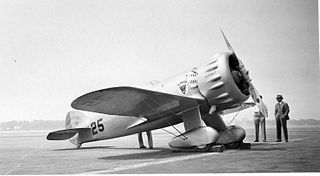
The Wedell-Williams Model 44 is a racing aircraft, four examples of which were built in the United States in the early 1930s by the Wedell-Williams Air Service Corporation. It began as a rebuilding of the partnership's successful We-Will 1929 racer, but soon turned into a completely new racing monoplane aircraft, powered by a large radial engine. Model 44s became the dominant racers of the 1930s, setting innumerable records including setting a new world speed record in 1933.

The Rollason Beta was a British midget racing monoplane developed from a competition to build a Formula One air racer in the 1960s in England. The Beta was first flown on 21 April 1967. The aircraft were successful air-racers in England during the late 1960s and early 1970s.

The Howard DGA-6 was a pioneer racing plane, nicknamed Mister Mulligan. It was the only airplane ever designed for the specific purpose of winning the Bendix Trophy. The plane was designed and developed by Ben Howard and Gordon Israel, who later became an engineer for the Grumman Aircraft Engineering Corporation. Mister Mulligan was designed to fly the entire length of the race nonstop and at high altitude. Neither had ever been done before. Mister Mulligan won the trophy, and thus changed the way in which long distance airplanes were designed.
Racer or The Racer or Racers may refer to:
The AMSOIL Racer, also known as the AMSOIL/Rutan Racer and the Rutan Model 68 Racer, was a race tandem wing plane which was designed by Burt Rutan's Rutan Aircraft Factory, and built and flown by Dan Mortensen. It set several speed records, but crashed at the 1983 Reno Air Races.

Sylvester Joseph "Steve" Wittman was an air-racer and aircraft designer and builder.

The Gee Bee Model Y Senior Sportster was a sport aircraft built in the United States in the early 1930s by the Granville Brothers. Essentially an enlarged two-seat version of the single-seat Sportster, it was a low-wing strut-and-wire-braced monoplane of conventional design with open cockpits and fixed tailskid undercarriage. The first of the two examples constructed remained with the Granville Brothers company and competed in many races, piloted by Maude Tait and Russell Boardman, among others. Later it also served as a support aircraft for the R-1 and R-2 racers. The second Model Y was built to order for the Cord Auto Company to be used as an engine testbed for the Lycoming R-680 engine they produced. This aircraft was later refitted with a Wright Whirlwind of nearly double the power of its original powerplant. In this form, it was flown by Florence Klingensmith at the 1933 Chicago International Races, where she won second place in the Women's Free-For-All, then perished in the aircraft after fabric became detached from the upper right wing while contesting the Phillips Trophy.
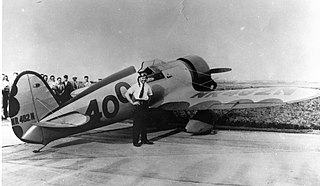
The Type R "Mystery Ships" were a series of wire-braced, low-wing racing airplanes built by the Travel Air company in the late 1920s and early 1930s. They were so called, because the first three aircraft of the series were built entirely in secrecy.

The Verville-Sperry R-3 Racer was a cantilever wing monoplane with a streamlined fuselage and the second aircraft with fully retractable landing gear, the first being the Dayton-Wright Racer. In 1961, the R-3 racer was identified as one of the "Twelve Most Significant Aircraft of all Time" by Popular Mechanics magazine. In 1924, an R-3 won the Pulitzer Trophy in Dayton, OH.

The Brown B-1 Racer was an American-built small monoplane racing aircraft of the 1930s.
The Brown Aircraft Co was an American aircraft manufacturer of the 1930s and 1940s.

The Brown B-3 was a 1930s American single-seat touring monoplane and air racer built by the Lawrence Brown Aircraft Company. Only one example was eventually built.
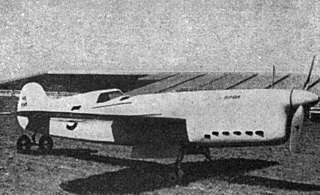
The Chester Goon aka The Chester Special #2 was a single-engine taildragger-configuration monoplane racer built for the 1938 National Air Races.

Chief Oshkosha.k.a.Buster is a homebuilt racing plane designed to compete in the 1931 American Cirrus Races.

The Howard DGA-4 a.k.a. Mike, and DGA-5 a.k.a. Ike and "Miss Chevrolet" was the next in a series of racers from Ben Howard. He built two examples, "Mike" and "Ike", each with a different landing gear design.

The Wedell-Williams Model 22 was a racing aircraft, two examples of which were built in the United States in the early 1930s by the Wedell-Williams Air Service Corporation. It was one of three early projects by aircraft designer Jimmy Wedell to create a racer and was built specifically to compete in the 1930 All-American Flying Derby from Buffalo to Detroit. It was a braced, low-wing monoplane originally powered by an inline Cirrus engine and equipped with fixed landing gear in large spats.
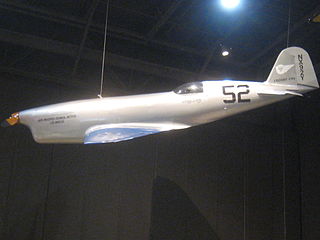
The Crosby CR-4 is a racing aircraft developed in the late 1930s
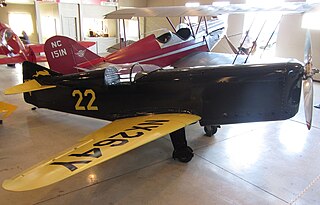
The Rider-Elmendorf R-5 Jackrabbit is an aircraft designed and built to compete in the National Air Races.

The Miles & Atwood Special is a racing aircraft developed during the interwar period

















